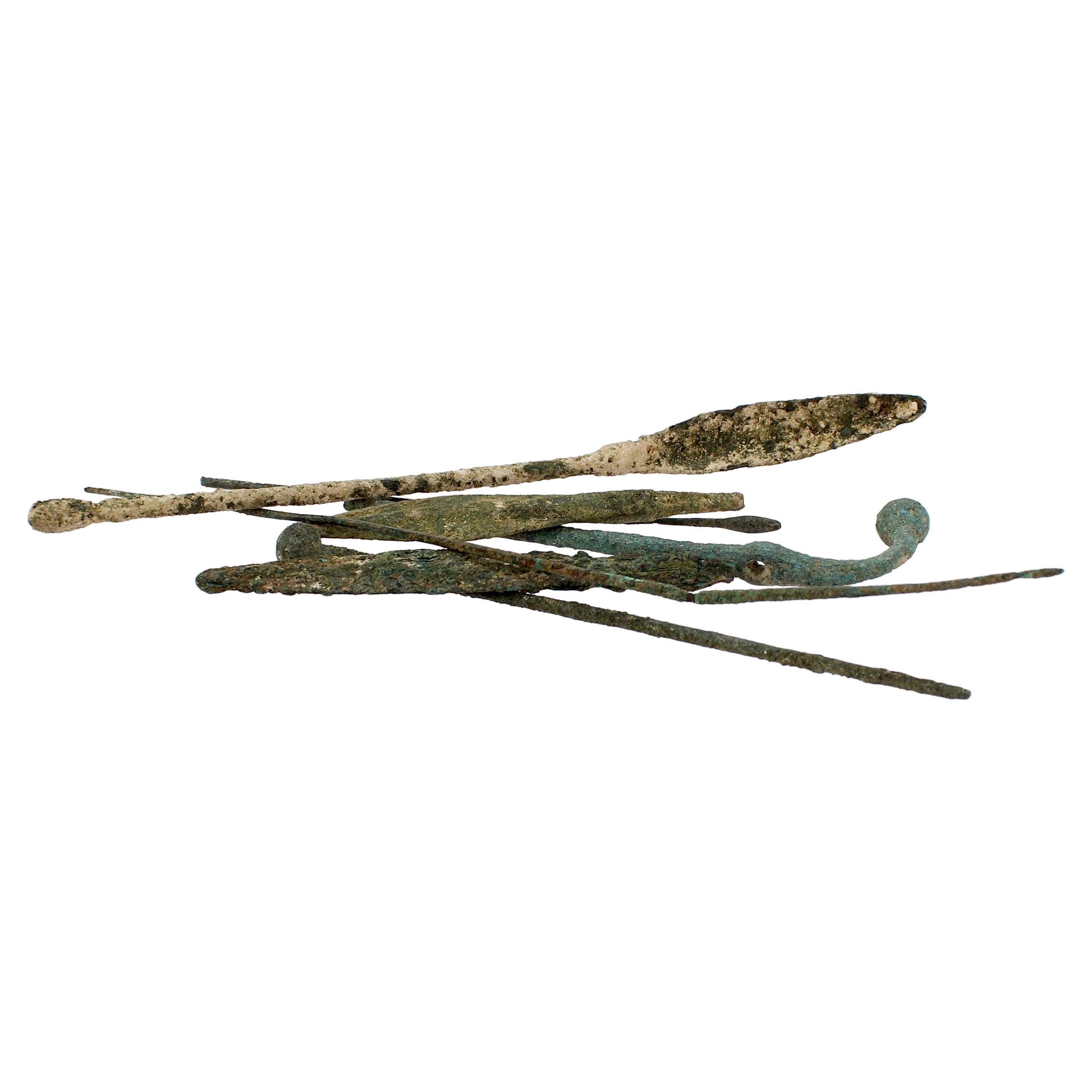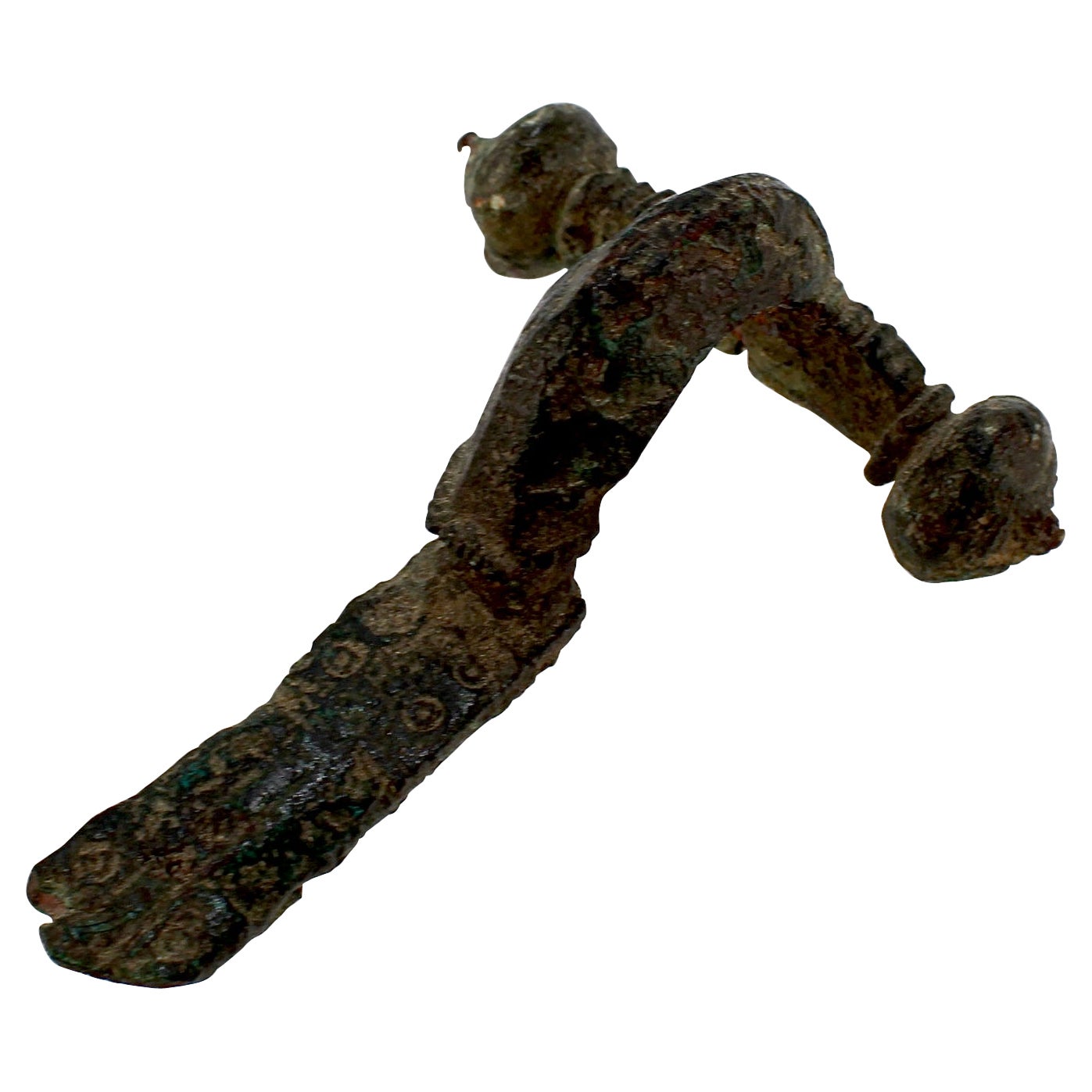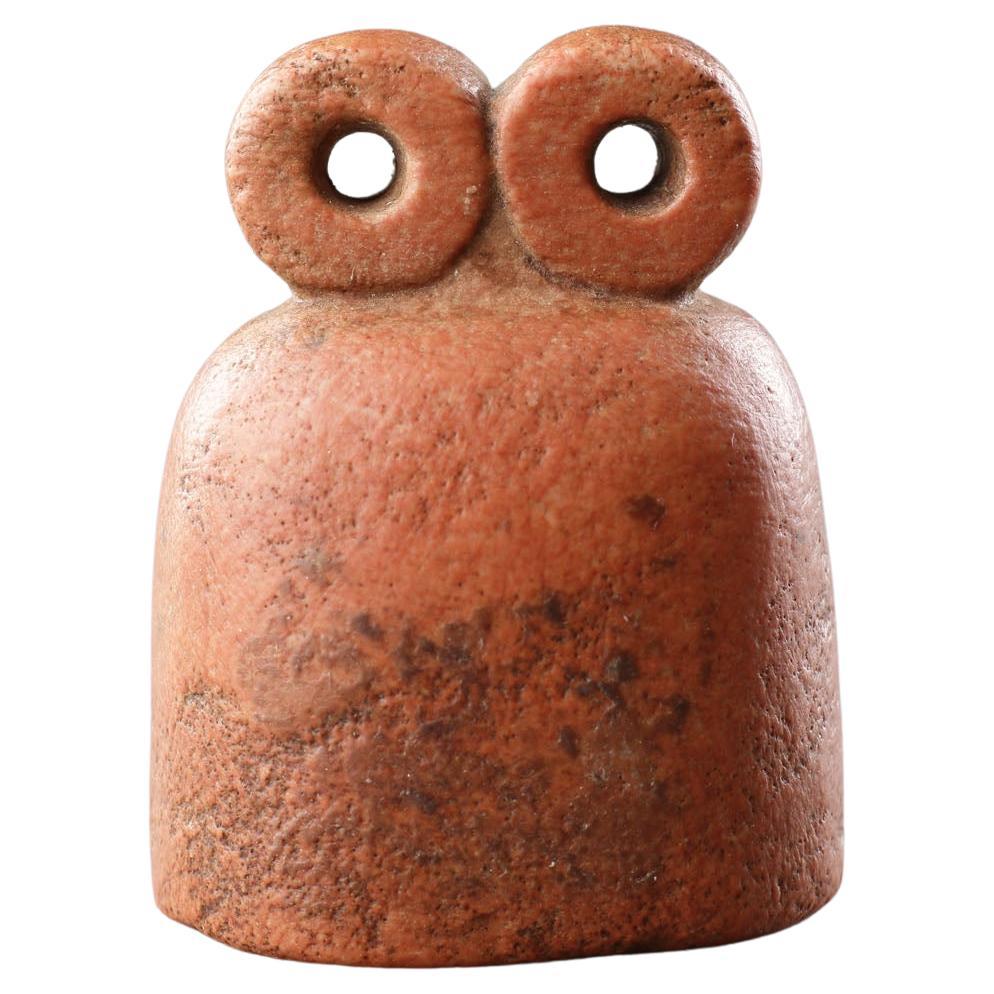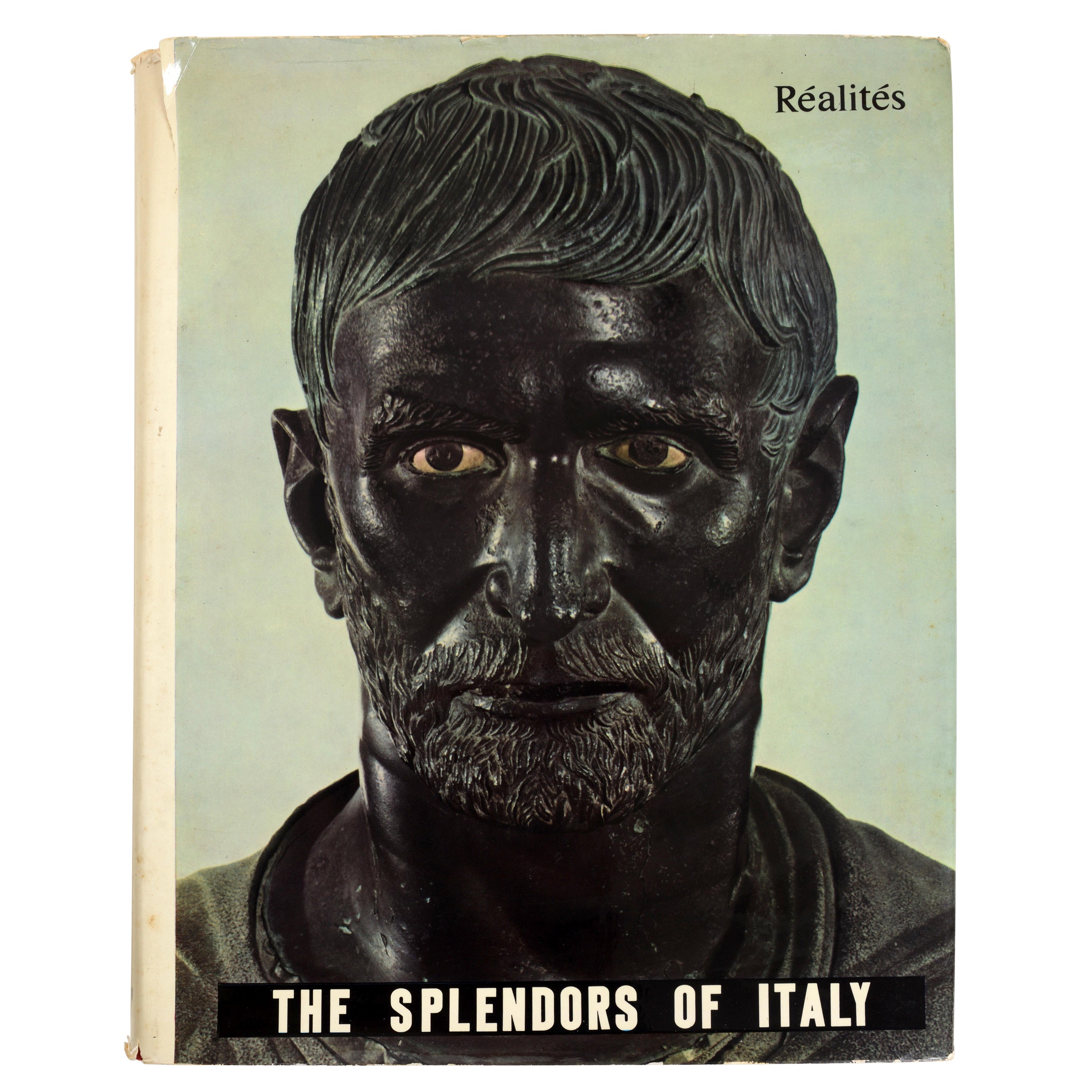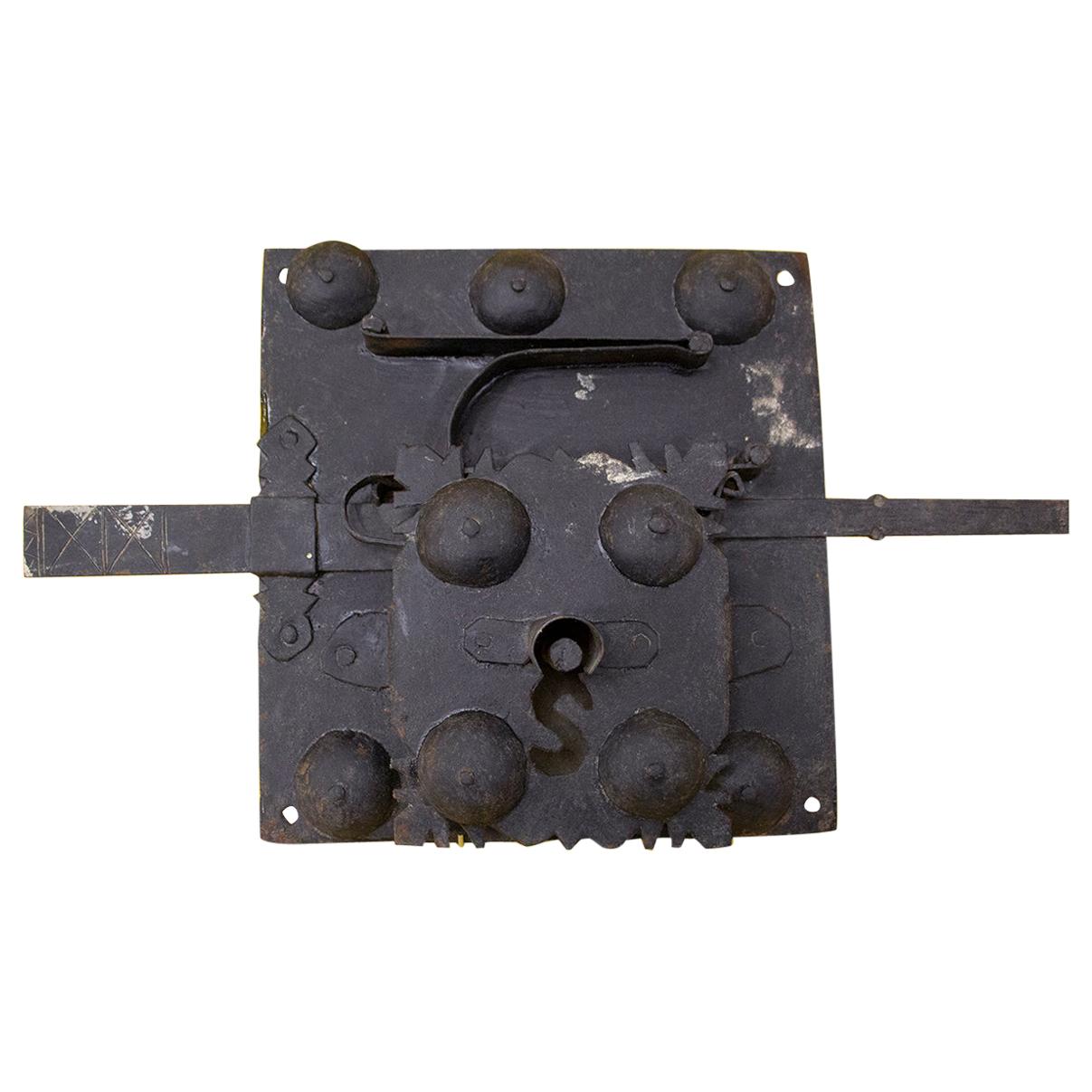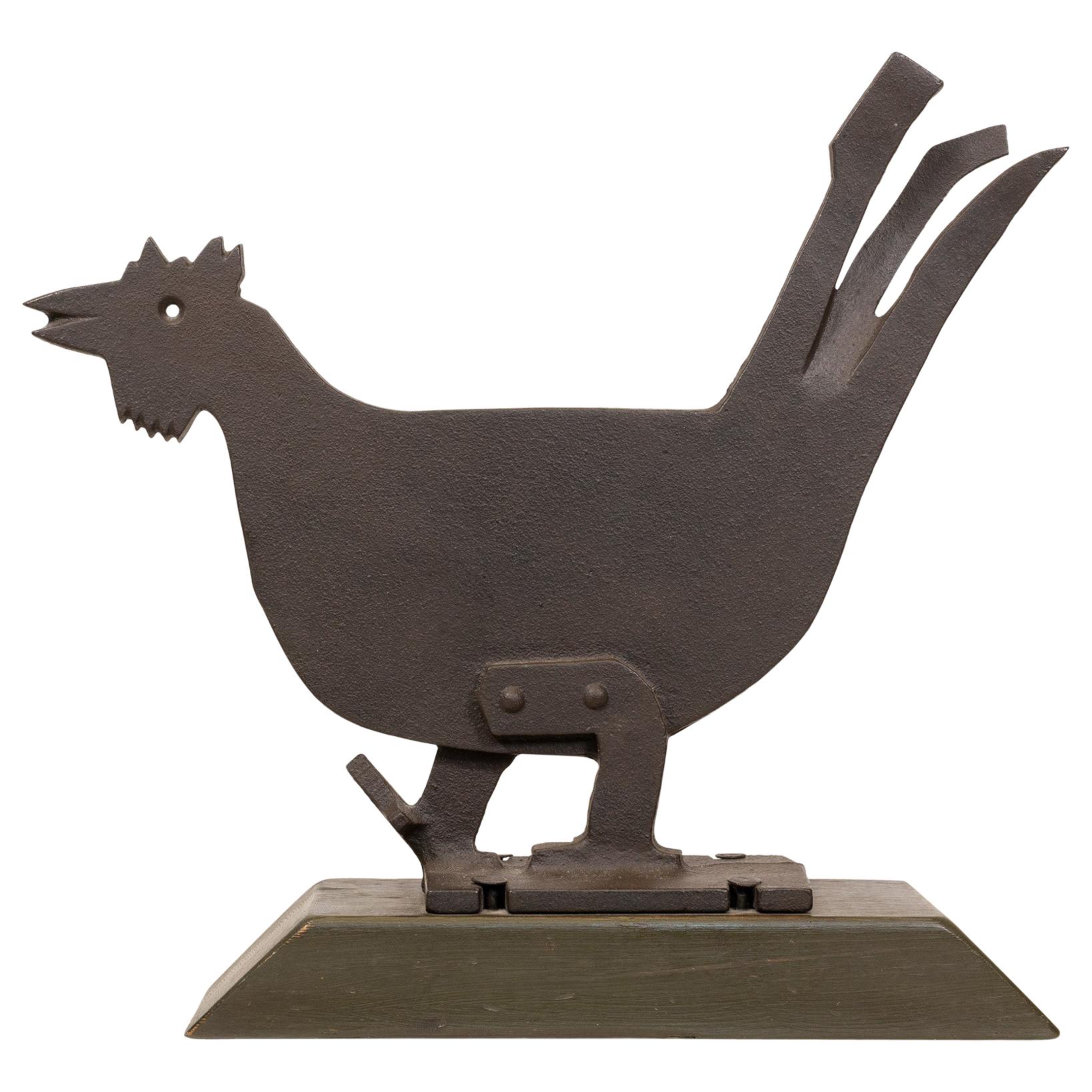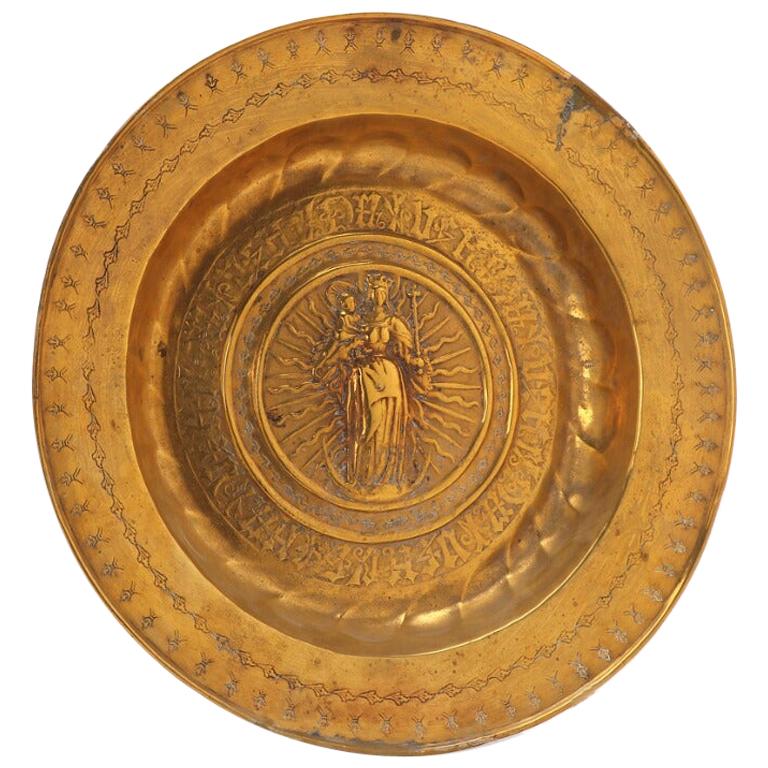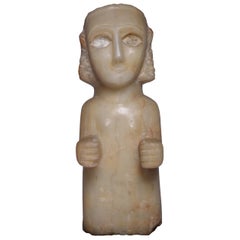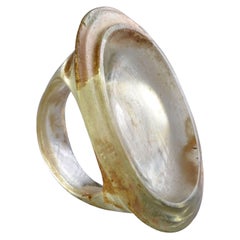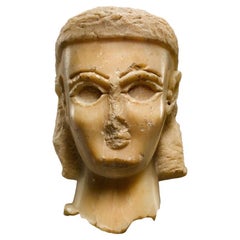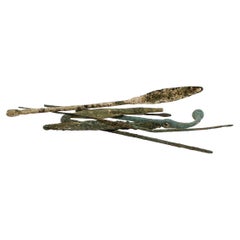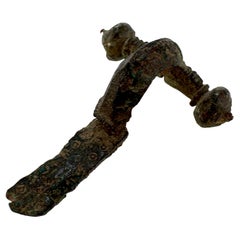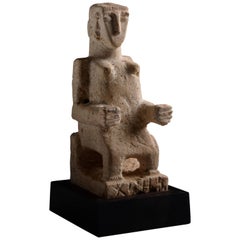
Ancient South Arabian Limestone Abstract Female Idol
View Similar Items
Video Loading
Want more images or videos?
Request additional images or videos from the seller
1 of 8
Ancient South Arabian Limestone Abstract Female Idol
About the Item
- Dimensions:Height: 7.25 in (18.42 cm)Width: 3 in (7.62 cm)Depth: 3.25 in (8.26 cm)
- Materials and Techniques:
- Period:
- Date of Manufacture:Circa 100 BC
- Condition:Minor chip to head restored. Mounted on a bespoke wooden base, as shown.
- Seller Location:London, GB
- Reference Number:1stDibs: LU105227975793
About the Seller
5.0
Recognized Seller
These prestigious sellers are industry leaders and represent the highest echelon for item quality and design.
Established in 2008
1stDibs seller since 2014
100 sales on 1stDibs
Typical response time: 5 hours
Associations
LAPADA - The Association of Arts & Antiques DealersInternational Confederation of Art and Antique Dealers' AssociationsThe British Antique Dealers' Association
More From This SellerView All
- Ancient South Arabian Alabaster StatueLocated in London, GBSouth Arabian Calcite female figure 3rd Century BC to 1st century A.D. Calcite Alabaster height: 30.5 cm A magnificent alabaster female figure, a f...Category
Antique 15th Century and Earlier Yemeni Figurative Sculptures
MaterialsAlabaster
- Ancient South Arabian Alabaster InscriptionLocated in London, GBSouth Arabian Alabaster Inscription Calcite Alabaster circa 1st century A.D. ‘’Consequently, neither white marble of Paros nor any other stone which men admire can be compared with the precious stones of Arabia, since their whiteness is most brilliant, their weight the heaviest, and their smoothness leaves no room for other stones to surpass them.’’ - Diodorus Siculus, Library of History, Book II, 52.9 This inscription, finely worked on an alabaster tablet, is a remarkably well preserved example of Ancient South Arabian script, with its distinct bold, angular forms, written in the Qatabanic dialect - that is, the dialect spoken by the people of the kingdom of Qataban, which ruled much of modern day Yemen from the 7th Century B.C. to the 2nd Century A.D. The text, which reads: ‘[... ...]sa?d and Ma?add?i- / (of the lineage) of Hawfa- / She entrusted Anb- / against any malfeasance (which would remove it) from its place’ - indicates that it likely served to commemorate a temple offering. The quality of the script, incised so neatly into the surface of the alabaster, tells us that this piece was commissioned by somebody of considerable wealth and prestige, employing a scribe of equally considerable expertise. South Arabia was known throughout the ancient world for its incredible wealth - so much so that the Romans termed the region ‘Arabia Felix’ - literally, ‘Happy, or Fortunate, Arabia.’ That wealth was built largely on the trade of spices and incense, in which the Kingdom of Qataban played a major part. According to Pliny the Elder, this was the sole country through which frankincense could be exported, first being collected in the city of Shabwa, on the South Arabian coast, and from there travelling by camel up to Gaza, to be shipped all across the Mediterranean - not only that, but all growers of myrrh across Arabia were required to give a quarter of their yield to the king of the Qatabanians. As such, the kingdom became exceedingly rich and powerful, and Pliny goes on to tell us that ‘The nations of the Larendani and the Catabani, and the Gebanitæ [...] occupy a great number of towns, the largest of which are Nagia, and Thomna (the capital of Qataban) with sixty-five temples, a number which fully bespeaks its size.’ Because of the nature of its exports, frankincense in particular - the ‘sweat of of the gods’ according to the Egyptian Book of the Dead, and perhaps most famous as one of the three gifts brought to the newborn Christ - being closely associated with the divine, South Arabia’s reputation in antiquity was as a mysterious, almost sacred, and - crucially - extraordinarily wealthy region, at the very edge of the known world; in the words of Herodotus: ‘’Enough of marvels, and yet the land of Arabia gives off a scent as sweet as if divine.’’ This inscription invokes the protection of god Anbay, the judge-oracle of the chief god ‘Amm, who he served as an attendant. Much of what we know of the religious life of the ancient South Arabians comes to us from early Islamic texts, describing what is known in Islamic scholarship as ‘Jahiliyyah’ - the age before the advent of Islam in Arabia. What comes across in much of these texts is that these religious practices placed a great deal of emphasis on sacred stones, perhaps linked to the brilliance of the alabaster which is local to the region, and which a great many of the cult-objects produced in this time are made from. Hisham ibn-Al-Kalbi’s Book of Idols records: ‘’The Arabs were passionately fond of worshipping idols [...] Whenever a traveller stopped at a place or station in order to rest or spend the night, he would select for himself four stones, pick out the finest among them and adopt it as his god, and use the remaining three as supports for his cooking-pot.’’ This inscription was once in the collection of the intrepid British-Australian travel...Category
Antique 15th Century and Earlier Yemeni Abstract Sculptures
MaterialsAlabaster
- Ancient Hellenistic Glass Finger RingLocated in London, GBThis beautifully preserved ring was cast from light green transparent glass. Its large size and shape are typical of Hellenistic finger rings, and its now ...Category
Antique 15th Century and Earlier Classical Greek Glass
MaterialsGlass
- Bronze Age Cypriot Plank IdolLocated in London, GBCypriot Plank Idol Early Bronze Age III - Middle Bronze Age I, c. 2100 - 1850 BC. Low fired burnished earthenware pottery with lime-filled incisions A Cypriot plank idol, an iconic form of human representation from Bronze Age Cyprus...Category
Antique 15th Century and Earlier Cypriot Abstract Sculptures
MaterialsTerracotta
- Ancient Greek Perfume BottleLocated in London, GBAthenian Black-glaze perfume pot with inscription Athens, c. 425-400 B.C. Terracotta Measures: Height: 9cm; diameter across lip: 7.5cm; width including handle: 9cm This 5th Cen...Category
Antique 15th Century and Earlier Italian Classical Greek Bottles
MaterialsPottery
- Ancient Greek Corinthian HelmetLocated in London, GBCorinthian helmet with Bull Horns and Lotus Flower Decoration. Archaic Period, c.550-500 BC. Cast, hammered and incised bronze. An exceptionally well preserved example of one of the most iconic ancient Greek...Category
Antique 15th Century and Earlier European Classical Greek Mounted Objects
MaterialsBronze
You May Also Like
- South Arabian Head of a WomanLocated in London, GBA female head finely carved from evenly-coloured cream alabaster. The face features a strong chin, high rounded cheekbones, and large elliptical eyes deeply inset for inlays. The remains of the nose indicate that it was long, thin, and roughly triangular in form. A small, round mouth sits just below the nose. Deeply incised eyebrows follow the shape of the eyes, which are framed by unusual grooved canthi on either side, possibly to represent cosmetic eye paint. The supraorbital margins above the eyes are deeply carved, while the carving below the eyes is more subtle, smoothing the sockets into the rounded cheeks. The ears are formed from two arcs and a central sphere, and both lobes are pierced for earrings. The long hair frames the face below the ears, and is carved to create a rougher texture. There is a stock sticker on the back of the neck. A fragment of the right shoulder remains. This suggests that the head was part of a larger sculpture, possibly a full figure (though this seems unlikely due to its relatively large scale) or, more likely, a bust. This head is stylistically aligned with those found at Timna, the capital of the ancient Yemeni kingdom of Qataban, which existed from the 1st millennium BC until the late 1st or 2nd centuries AD. Timna served as an important hub of the Incense Route, the camel caravan that transported incense from Arabia and India to ports on the Mediterranean Sea. Roman author and philosopher Pliny the Elder (23/24-79 AD) described Timna as a busy city with around 65 temples. Excavations in 1950 and 1951 by Wendell Phillips...Category
Antique 15th Century and Earlier European Antiquities
MaterialsAlabaster
$107,540 - Group of Ancient Roman Bronze Tools & Hair PinsLocated in Philadelphia, PAA fine group of ancient Roman bronze implements and artifacts. Consisting of pins & several small scale tools. From the private collection of Lawrence Majewski, who was a former co...Category
Antique 15th Century and Earlier Italian Classical Roman Antiquities
MaterialsBronze
- Ancient Roman Bronze Crossbow Fibula or Toga PinLocated in Philadelphia, PAA fine ancient Roman bronze fibula. A so-called 'crossbow' fibula. From the private collection of Lawrence Majewski, who was a former conservator at the Metropolitan Museum of Art....Category
Antique 15th Century and Earlier Italian Classical Roman Antiquities
MaterialsBronze
- A Fine Mesopotamian ‘Eye Idol’Located in London, GBA Fine Mesopotamian ‘Eye Idol’ Red Quartzite Northern Mesopotamia Circa 3200 BC Size: 3.5cm high, 3cm wide, 2cm deep - 1½ ins high, 1¼ ins wide, ¾ ins deep ...Category
Antique 15th Century and Earlier Iraqi Antiquities
MaterialsQuartz
- The Splendors of Italy by Guglielmo De Angelis D'ossat, 1st EdLocated in valatie, NYThe Splendors of Italy by Guglielmo de Angelis d'Ossat, Director-General of Antiquities and Fine Arts Of Italy. Translated by Geoffrey Braithwaite. 1st Ed hardcover with dust jacket....Category
Vintage 1960s Italian Books
MaterialsPaper
- Asian Indian Hindu Ethnographic Tribal silver Amulet necklace VintageLocated in London, GBIndian Hindu Silver Amulet necklace Heavy bullet shaped Amulet necklace with pointed ends with floral and geometric design High grade silver Pendant Length 9 cm weight 90 gra...Category
Early 20th Century Southeast Asian Antiquities
MaterialsSilver
$283 Sale Price50% OffFree Shipping
Recently Viewed
View AllMore Ways To Browse
Alabaster Female
Islamic Oriental Furniture
Arabian Ancient
Antique Idol
Verdure Art
Limestone Fragment
South Arabian
Camel Garden Seat
Oriental Garden Seat
Ancient Limestone Fragment
Votive Cover
British Royal Coat Of Arms
Vintage Commercial Display Furniture
Antique Farm Collectables
Action Office 1
World War 2 Navy
Antique Farm Antiques Collectibles
Antique Farm Collectibles

